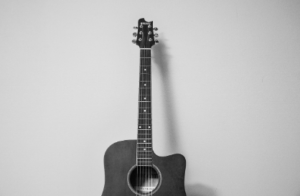Embraced by artists worldwide, Martin’s guitars help define virtually all genres of music. The company’scompany’s range of body styles includes standard, acoustic-electric and limited edition models.
 Sitka spruce soundboards are now substituted for Lutz spruce. Some original Style names have gone extinct, but size and trim are still used to identify different guitars.
Sitka spruce soundboards are now substituted for Lutz spruce. Some original Style names have gone extinct, but size and trim are still used to identify different guitars.
Sound
A Martin guitar is known for its sound and can be an excellent choice for beginners and experienced musicians. It is also an affordable option for those who are interested in trying out different types of guitars. However, there are some things that you should keep in mind before buying a Martin guitar. For example, you should consider the type of wood that is used in the guitar. Some Martin models use rosewood, which has a rich sound. Other models use koa or sapele, which have a lighter sound.
Another thing to remember is that the sound of a Martin guitar can be affected by the body shape and scale length. For this reason, you should choose a model that is right for your needs. For instance, select a smaller body size to play fingerstyle. On the other hand, if you’re going to play rock and roll, you should choose a larger body size.
If you are looking for a vintage Martin, you should check out the company’scompany’s Authentic series. This line features instruments made in the golden era of the company’s-company’s history. These instruments are available in various styles, and they are sure to impress any music lover.
In addition to traditional acoustic guitars, Martin also produces electric guitars. These are designed with an amplifier and can be used in live performances. Moreover, many of Martin’sMartin’s guitars are hybrid models that can be used with acoustic and electric systems.
The company is an American-based musical instrument manufacturer founded in 1833 in New York by Christian Frederick Martin. The business later moved to Nazareth, Pennsylvania, where it is still headquartered today. The company has been making guitars for more than 190 years and continues to be a family-owned business.
Design
In the 1930s, as the Great Depression set in, Martin needed to find ways to lower production costs while offering quality instruments. The result was the 15 series, which used less expensive wood and construction methods to keep them in business. These guitars do not have the same tonal qualities as all solid wood Martins, but they still provide an affordable entry into Martin guitars.
Christian Frederick Martin Sr. learned his craft in Europe, where he apprenticed with master luthiers and followed the guild system of professional woodworkers. He brought this expertise to the United States and started his own guitar-making company in 1833. Today, Martin is a family-owned business that continues to make exceptional acoustic guitars. Over the decades, these instruments have accompanied countless iconic performers, from Civil War soldiers around campfires to Jimmie Rodgers and Gene Autry on stage at Woodstock and MTV Unplugged.
During the first century of Martin guitar, the popularity of acoustic instruments increased as people sought to join bands and sing in church choirs. It meant they needed larger-bodied guitars with greater perceived volume and more low-end power to be heard over the other musicians. The first 00-size guitars appeared in the company’scompany’s sales ledgers in 1902, and the jumbo was introduced in 1934.
Martin adapted their traditional slope shoulders to allow these more prominent guitars to sound more balanced across the registers with greater volume and a punchy midrange. They also added their patented X-bracing pattern, strengthening the top to handle the higher tension and stress of steel strings.
When the 15 series was introduced, many questioned whether it would stand up to electric guitar pickups, but it did well. Even as rock and roll evolved into a different style, players like Eric Clapton continued to use their Martin acoustics, with his famous MTV Unplugged performance a highlight.
In the 1990s, as guitar technology accelerated and digital instruments became more popular, many acoustic manufacturers switched to HPL (High-Pressure Laminate) instead of all-solid wood construction. While some synthetic guitars were well-made, they sounded nothing like an all-solid wood Martin. Today, Martin offers HPL-based models that are closer in tone to an all-solid wood guitar than those made in the past.